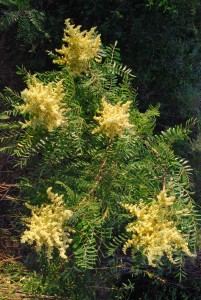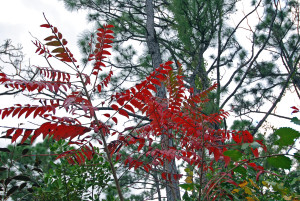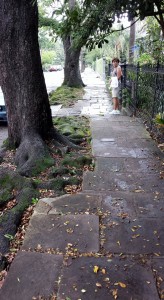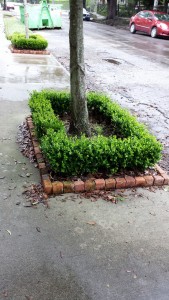Our native strangler fig, Ficus aureus, is one of the best trees to attract birds in South Florida. In April, when the migrating birds
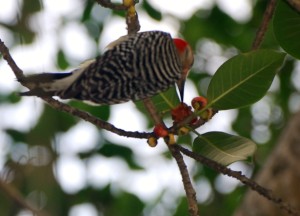
pass through, it will have up to dozens of birds including warblers, catbirds, hummingbirds, vireos, and flocks of cedar waxwings as well as the local bluejays, mockingbirds, cardinals and even squirrels feeding on the ripening figs. It will fruit on and off all year.
The roots tend to go down and secure the tree in high winds. Non native ficus trees have shallow roots that allow the tree to tip over during storms. Also, the non native Indian Laurel Fig and several others are invasive and although still available for sale, should not be planted.
The Native Strangler Fig will start life as a seedling in the canopy of another tree, usually a cabbage palm. The roots grow down and upon touching the ground will take root and thicken. Eventually the host is shaded to death or its trunk is prevented from expanding so that it is strangled.
Do not plant closer than fifty feet from your house or pool because the roots will venture out that far from the tree and may crack the cement that they grow under. Keep an eye out for the roots which are often on the ground surface and cut them way back if they are headed for trouble.
Although the berries are great for birds, it is the insects that this tree attracts that are just as beneficial. Young birds need insects to grow and adults need them too. You may notice some damage to the leaves yet it is minimal. The ruddy daggerwing butterfly caterpillar feeds on the young leaves and turns into an interesting orange butterfly with wings that look like a leaf with veins and a petiole.
For South Florida there is also the native short leaf fig, Ficus citrifolia, found naturally in the Florida Keys and South Miami. This is smaller than the strangler fig and doesn’t put out as many aerial roots from its branches.
Both of these are available at meadowbeautynursery.com
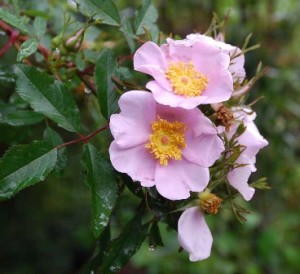 Native swamp rose can be grown in most moist soils and will tolerate a good deal of drought. It will sucker and form a thicket which needs to be located away from walkways yet close enough that the fragrant pink flowers can be smelled. Birds like the fruit and the protection of the thorny stems while children and the inner child of adults love the fragrance. This will bring back memories of your childhood so beware of an emotional response.
Native swamp rose can be grown in most moist soils and will tolerate a good deal of drought. It will sucker and form a thicket which needs to be located away from walkways yet close enough that the fragrant pink flowers can be smelled. Birds like the fruit and the protection of the thorny stems while children and the inner child of adults love the fragrance. This will bring back memories of your childhood so beware of an emotional response.

